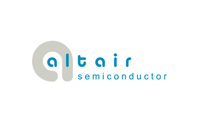AT&T is opening up its application programming interfaces (APIs) to allow solution providers to develop their own customized solutions for a differentiated experience.
A newly launched AT&T Partner Exchange promises visibility into certain AT&T systems, processes, and tools. By opening up certain APIs to partners, AT&T said it can accelerate its delivery of mobility managed services, cloud and networking solutions to the tens of thousands of businesses. Solution providers will be able to develop customized solutions that fully integrate with AT&T's IP network.
"We're throwing open the doors to our center of innovation - the AT&T Foundry and inviting solution providers to work directly with us to create more choices for business customers," said Brooks McCorcle, president of AT&T's new Emerging Business Markets organization. The organization was established within AT&T Business Solutions.
"Through this new approach and collaboration with solution providers, we expect to rapidly expand our market reach and deliver more tailor-made cloud, mobility managed services and networking solutions to companies across a number of industries," she added.
AT&T Partner Exchange Benefits for Solution Providers:
- Ability to bundle solutions from one of the leading worldwide providers of IP-based communications to businesses, including cloud solutions, mobility managed services and virtual private networking services
- Business growth with a new recurring revenue stream for AT&T and solution providers
- Attractive financial rewards such as market development funds and a simple, straightforward rate structure
- Easy-to-use portal with resources, tools and visibility into certain AT&T systems – automated and customized support structure that provides cost efficiencies
- Ability to customize solutions and client experience with open APIs
- Speed to market: emphasis on ordering, delivery and support
- Robust 360° support and access to a dedicated account team, 24x7 online ticketing, live chat and more.
https://www.att.com/partnerexchange/























